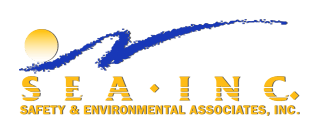THE MOST IMPORTANT THINGS TO KNOW ABOUT BEING A DOT HAZMAT EMPLOYER

WHY YOUR EMPLOYEES NEED TO BE DOT HAZMAT TRAINED
If your company handles hazardous materials, even occasionally or in an indirect way, your employees may need DOT hazmat training. Non-compliance with DOT regulations is both illegal and dangerous.
If your employees come into contact with hazardous waste as part of their job description, they need to be trained in handling hazardous materials according to the standards developed by the U.S. Department of Transportation (DOT). Failing to comply with DOT hazmat training can have serious and costly consequences for your business and the health and safety of your workers.
Who Needs DOT Hazmat Training in Arkansas?
U.S. DOT hazmat training regulations apply to any company that has employees who perform duties that are in any way governed by the DOT Hazardous Materials Regulations, including:
Packaging, labeling, or marking hazardous materials for transport
Loading, unloading, or transporting hazardous materials
Receiving or forwarding hazmat items
Creating or testing hazardous materials packaging
Determining if a material is hazardous or classifying hazardous materials
Determining if any placards, labels, or markings need to be applied to hazmat packaging
Filling out shipping papers for hazmat
Responding to reports of any hazmat incidents including leaks, spills, and damaged packages
This is not an all-inclusive list. Employees who supervise any of the above duties, and any contractors hired to perform them, must also be fully hazmat trained.
Employee training must be repeated every three years, and your company must maintain records of recurrent training for at least three years. Training records must also be kept for 90 days after any hazmat-trained employee leaves the company. Additional training is also required if the DOT issues any new hazmat rules or revises existing ones.
These rules apply to all companies regardless of size or the amount of hazardous materials they process. Non-compliance with DOT hazmat training can be expensive. If an inspector finds training violations, the minimum fine is $450 per employee, per day, and can be as high as $75,000 per day for each violation.
Hazmat Training and Safety
The point of hazardous materials training is ensuring the safety of your employees and others along the supply chain who handle hazardous materials. There were over 16,000 accidents and incidents involving hazardous materials last year —including spills, leaks, fires, and chemical exposure—resulting in 175 serious injuries, 11 fatalities, and more than $110 million in property damage.
Safety standards require that employees know how to identify, load, transport, and store hazardous materials and appropriately respond to an incident. Hazmat workers who are not sufficiently trained are a dangerous liability. Make sure your workers are trained correctly and your company is in compliance.
SEA can customize our training courses to your site-specific needs. We offer on-site presentations as well as open enrollment classes at our Little Rock facility. Our next DOT Hazmat training will be October 2-9, 2015. Sign up before the seats are gone!
For more information about DOT hazmat training in Arkansas, contact SEA, Inc. at 501-568-3111 to speak with one of our training specialists.

f you think PFAS regulation is someone else’s problem, think again. The regulatory environment around per- and polyfluoroalkyl substances is shifting rapidly, and safety, environmental, and operations teams are squarely in the crosshairs. Rather than scrambling when the deadlines arrive, your best strategy is to act early.

Halloween might be the season for ghost stories and haunted houses, but for safety and environmental professionals, the real nightmares happen at work. From unseen hazards to data disasters, these frights are all too real. At SEA, we help EHS managers conquer their fears — and their risks — with smart, proactive solutions that turn horror stories into success stories.

Every year, OSHA releases its list of the most frequently cited workplace safety standards. While the names change little from year to year, the numbers tell a story: employers continue to struggle with the same hazards—falls, hazardous chemicals, and machine safety. Understanding these violations is the first step in preventing costly citations and protecting workers.
